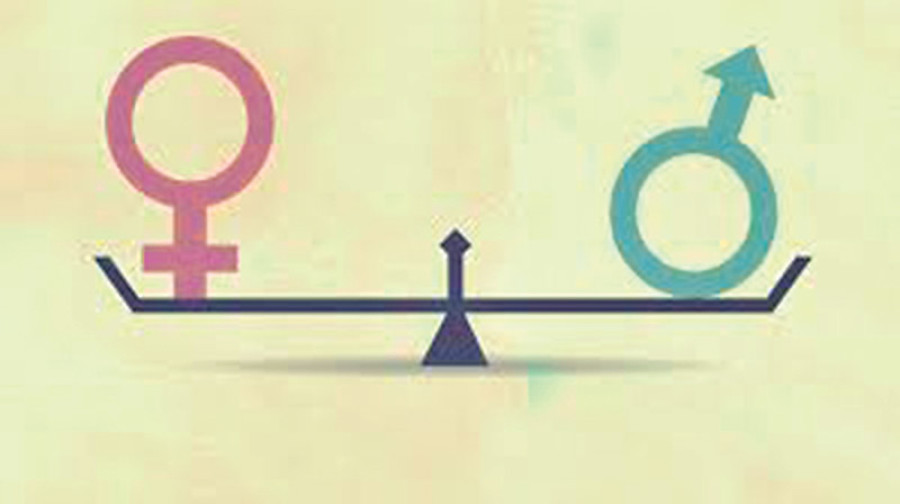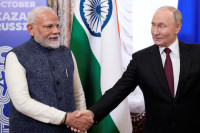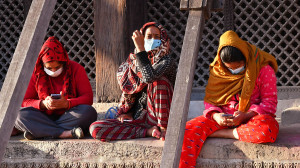Opinion
No more dress code
In 1998, I used to be a teacher and taekwondo trainer at Dawning English Boarding School in Myagdi. All the taekwondo students were boys, and in a bid to encourage girls to join,
Giri Bahadur Sunar
In 1998, I used to be a teacher and taekwondo trainer at Dawning English Boarding School in Myagdi. All the taekwondo students were boys, and in a bid to encourage girls to join, I demonstrated a few women empowerment self-defence techniques in the open. A few girls did sign up, but some of them were clad in gowns and lungis which made it very difficult to perform some moves. When I told them to come in trousers, they stopped coming to class. I visited their homes to find out the reason. Some said they didn’t like wearing trousers, some said their parents did not allow them to wear trousers, some feared social stigma and some said they could not afford them. What I learned from this experience is that women’s subordination is all-round—economic, social, religious, cultural, political and ideological.
In rural Nepal, there are many girls and women who still feel shy to wear trousers. Even in urban areas, lungis, gowns, sarees and burqas are seen as symbols of femininity, and jeans or other types of trousers as symbols of masculinity. The different types of clothes, colours and toys made for males and females are automatically shaping the ideology of masculinity and femininely. For me, trousers or pants are symbols of flexibility, speed and freedom while gowns, lungis and sarees are symbols of rigidity, slowness and bondage.
Putting it to the test
In order to find out how the generated socio-cultural customs of dressing creates masculine and feminine minds which ultimately affects the progress of women, I conducted a few tests. I asked my wife to put on her lungi, I wore my usual trousers, and we took a walk to the shrine of Budhanilkantha from Chapalighumti, a distance of about 1km. My wife could not keep up with me because she said the lungi did not allow her to take long strides. The next day, we switched clothes. My wife was able to walk faster than me, and I even stumbled a few times.
For the second test, we did some stretching on our roof and practiced our kicking. My wife wore her lungi, and she could not stretch properly or kick as high as me. She said that she couldn’t stretch properly or kick very high because the constricting lungi prevented her from lifting her leg as high as she wanted to. After that, I asked my wife to put on her trousers and do the same moves. She was able to stretch and kick with ease. It was my turn to practice stretching and kicking wearing the lungi, and I couldn’t perform as well as I do normally.
The results of these two experiments led me to conclude that outfits like gowns, lungis, sarees, burqas and skirts prevent women from being as flexible as men. Moreover, my practical observation sessions during women empowerment self-defence training showed that girls and women wearing kurta surwals, trousers and pants can perform better than those wearing gowns, lungis, sarees and high-heeled shoes. These outfits are practically and symbolically not letting girls and women be flexible and have been barriers for women. These clothes are seen as have a feminine quality while trousers are considered to have a masculine quality. These supposefly feminine outfits have been conditioning the minds of girls and women from ages.
Changing minds
Social narratives, dramas, movies and books are also creating the idea of masculinity and femininity in our society. Many extra-familial influences affect gender-role typing. Male and female roles are portrayed in gender-stereotypic ways on television and in the movies and many children’s books. Males are more likely than females to be portrayed as aggressive, competent, rational and powerful in the workforce. According to French philosopher Michel Foucault, the subjectivity of girls and women can be changed; it just needs regular practice. Girls and women can be flexible, faster and stronger. Girls and women can occupy equal space as men in the public and private spheres.
The idea of a dress code that men should wear this and women should wear that must be dismantled. Poets, fiction writers, dramatists and movie makers must show powerful women, flexible women and intelligent women in their works instead of showing women merely as a love object or housewife. As men, we must avoid using abusive and dominating words against girls and women in their day-to-day life, otherwise it will take decades to empower girls and women psychologically.
Girls and women should be able to put on traditional and cultural outfits during special occasions or at any time if they wish to, but they should not be forced to do so in the name of culture and tradition. Muslim women, Hindu women, Christian women, Jewish women and women belonging to other religions and cultures must not be discriminated against on the basis of their outfits within their society or outside. A dress code must not be imposed on anybody, and it should not be a tool to generate the idea of masculinity and femininity because it creates an unequal society with unequal access to power.
Sunar is a sociologist




 18.12°C Kathmandu
18.12°C Kathmandu








%20(1).jpg&w=300&height=200)

